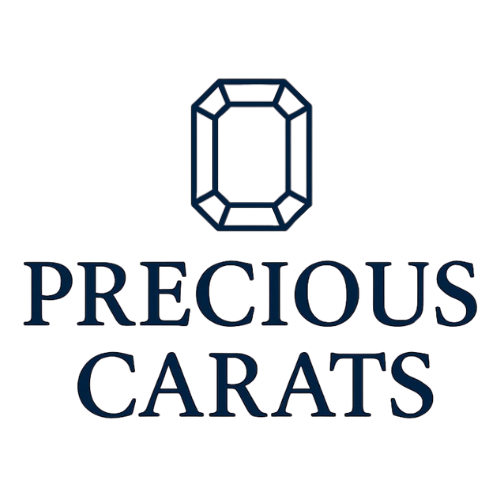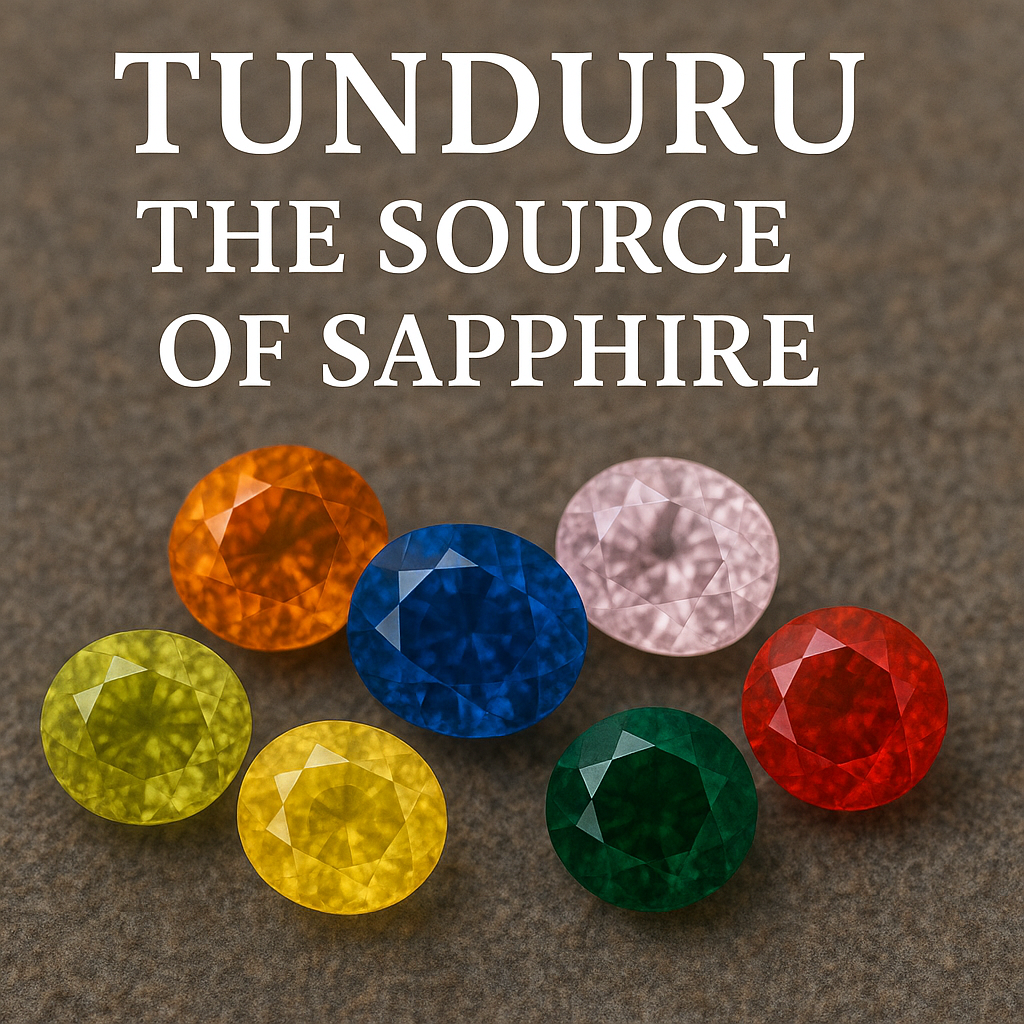Tunduru Sapphires – The Rainbow Treasure of Tanzania
Introduction
Tunduru sapphires are one of the most colorful and fascinating gemstone varieties found in East Africa. Originating from the Tunduru district of southern Tanzania, these sapphires are famous for their astonishing range of colors – from deep blues to delicate pinks, radiant yellows, lush greens, and even rare padparadscha-like hues. Unlike Kashmir sapphires, which are valued for their singular velvety blue, Tunduru sapphires are celebrated for their diversity and brilliance. Over the last few decades, they have become a unique source of sapphires to the global market.
1. Origin and History of Tunduru Sapphires
The discovery of Tunduru sapphires dates back to the early 1990s, when artisanal miners in Tanzania uncovered alluvial deposits containing corundum gemstones. Very quickly, the region became internationally recognized as a significant sapphire source alongside Sri Lanka, Madagascar, and Burma. The Tunduru district’s river gravels yielded stones of incredible color variety, attracting gem traders and collectors from around the world.
2. Gemological Properties of Tunduru Sapphires
– Species: Corundum (Al₂O₃)
– Hardness: 9 on the Mohs scale, making them highly durable
– Colors: Blue, pink, yellow, green, violet, orange, parti-colored, and padparadscha-like tones
– Sizes: Mostly small to medium-sized stones under 2 carats, with rare larger specimens
– Clarity: Often transparent to slightly included; some inclusions typical of African sapphires
3. Why Tunduru Sapphires are Unique
Tunduru sapphires stand out because of their extraordinary color diversity. While most sapphire origins are known for specific shades, Tunduru produces the entire rainbow. This makes them highly versatile in jewelry and increasingly attractive for collectors. Some stones exhibit padparadscha-like hues, a mix of pink and orange, which are among the rarest sapphire colors. Their brilliance and variety give Tunduru sapphires a special place in the gemstone market.
4. Treatments in Tunduru Sapphires
Many Tunduru sapphires undergo heat treatment to improve clarity and enhance color. Heat treatment is an accepted practice in the gemstone world, but untreated Tunduru sapphires command premium prices. Diffusion treatment is less common but can occur; buyers must ensure certification from reputable labs such as GIA, IGI, or GRS.
5. Astrological Significance of Tunduru Sapphires
Astrologically, sapphires are powerful gems. Tunduru sapphires can be used depending on their color:
– Blue Tunduru sapphires: Ruled by Saturn (Shani), best for Capricorn and Aquarius natives.
– Yellow Tunduru sapphires: Associated with Jupiter (Guru), ideal for Sagittarius and Pisces.
– Pink/Orange Tunduru sapphires: Often linked with Venus or Sun energies, adding harmony and charm.
This versatility makes Tunduru sapphires suitable for multiple planetary remedies, provided they are natural and untreated.
6. Benefits of Tunduru Sapphires
a) Emotional Benefits
– Encourage creativity and artistic inspiration
– Provide emotional balance and inner calm
– Reduce confusion and improve decision-making
b) Physical Benefits
– Traditionally believed to improve mental clarity and focus
– Enhance stamina and vitality
– Support general well-being through gemstone vibrations
c) Spiritual Benefits
– Blue sapphires bring Saturn’s discipline and truth
– Yellow sapphires bring Jupiter’s wisdom and prosperity
– Pink and orange sapphires encourage love, harmony, and balance
7. Market Value and Rarity
Tunduru sapphires are relatively more affordable than Kashmir or Burmese or Sri Lankan sapphires but are steadily increasing in value due to demand. Fine untreated pink, yellow, or padparadscha-like stones can fetch between $500 and $5,000 per carat. Blue Tunduru sapphires are admired for their brilliance but are less expensive than their Kashmiri counterparts. Collectors are now paying greater attention to Tunduru sapphires because of their uniqueness and potential appreciation in value.
8. Buying Guide for Tunduru Sapphires
– Certification is essential: Ensure the stone is natural and untreated.
– Look for brilliance and saturation: The most prized Tunduru sapphires are vivid and bright.
– Avoid diffusion-treated stones: These are less valuable for both jewelry and astrology.
– For astrological use, choose untreated clarity stones weighing at least 3–5 carats.
9. Care and Maintenance of Tunduru Sapphires
– With hardness of 9, they are durable, but avoid sharp blows.
– Clean with mild soap and lukewarm water.
– Avoid ultrasonic cleaners for stones with visible inclusions.
– Store separately to prevent scratches from harder gems like diamonds.
10. FAQs on Tunduru Sapphires
Q1: Are Tunduru sapphires rare?
Yes, especially in larger sizes and padparadscha-like colors.
Q2: Can they be used for astrology?
Yes, if untreated and correctly matched to planetary requirements.
Q3: How do they compare to Kashmir or Burmese sapphires?
Kashmir sapphires are valued for cornflower blue, Burmese sapphires for royal vivid tones, while Tunduru sapphires are famous for their wide spectrum of colors.
Q4: Do Tunduru sapphires have investment value?
Yes, untreated stones in fine colors are appreciating in value and are increasingly sought after.
Q5: Which Tunduru sapphire colors are most valuable?
Padparadscha-like pink-orange, vivid yellow, and fine pink stones are considered the rarest and most valuable.
Conclusion
Tunduru sapphires represent the rainbow of the sapphire world – diverse, lively, and full of character. While they may not yet have the legendary prestige of Kashmir or Burma, their astonishing range of colors, affordability, and growing recognition make them a vibrant choice for collectors, jewelers, and astrology enthusiasts. Whether chosen for investment, adornment, or spiritual remedies, Tunduru sapphires shine as a gemstone treasure from Tanzania, celebrating the endless possibilities within the world of corundum.

